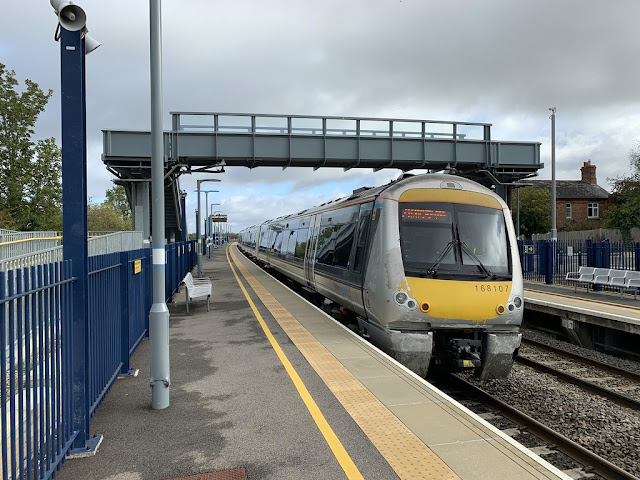 |
| View down the hill |
| Information | |
|---|---|
| Type: | Private Railway (Bridgnorth Castle Hill Railway) |
| Opened: | 1892 |
| Stations: | 2 |
The railway opened in 1892 as an easier way for residents and visitors to Bridgnorth to travel between the high and low parts of the town. On foot the journey climbs over thirty metres and involves a climb of two hundred steps! The railway opened with two wooden cars using water and gravity to transfer the cars over the sixty one metre long line [1]. The funicular railway has a maximum gradient of sixty-four percent making it one of the steepest in the country.
The railway has remained open every since apart from a period of about a year in the mid-1930s when the railway was closed due to financial troubles. The railway was rebuilt in 1943-44 to use electricity to move the two cars. The original cars were replaced by the current aluminium cars in 1955. The cars have a maximum capacity of eighteen passengers. The track was renewed with bullhead rails in the early 1970s. The railway uses 1, 067mm gauge.
There are two stations at either end of the line with around two hundred return trips made every day. The journey takes just over a minute!
Although unconnected to any other railway the low-level station is close to the Severn Valley Railway's station in Bridgnorth.
 |
| One of the cars at the high level station |
 |
| Entrance to the high level station |
 |
| Entrance to the low-level station |
[1] Martin Easdown, Cliff Railways, Lifts and Funiculars (Amberley, 2018) p. 14







































